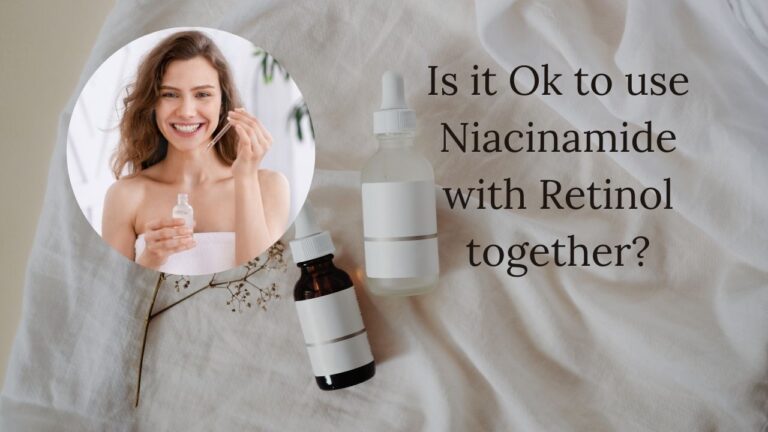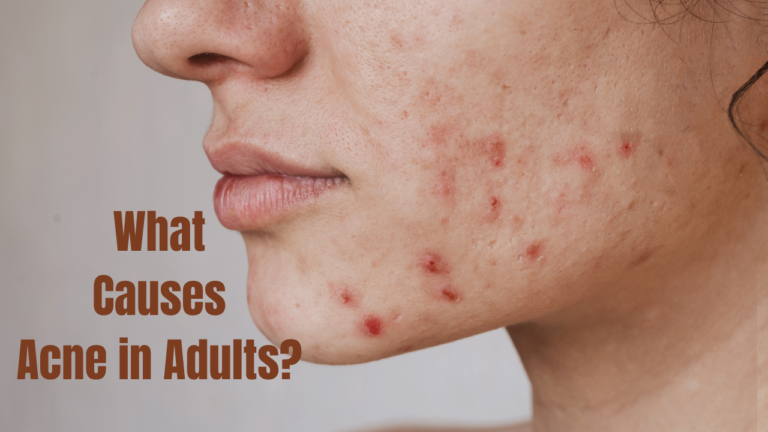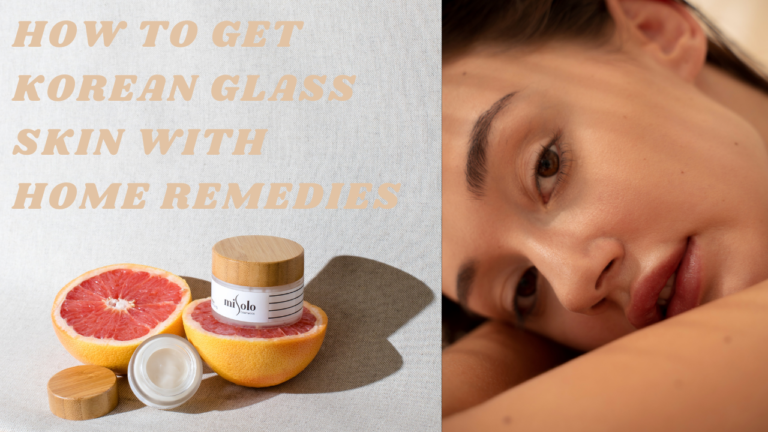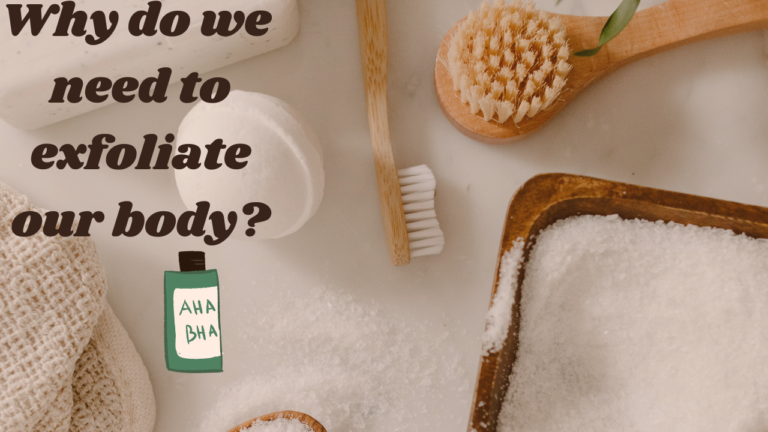Skincare Routine for Dry Skin
Perhaps you have flaky, scaly, tight, or a combination of all three types. This is due to the skin’s lack of moisture. A regular skincare regimen that hydrates the skin and repairs its natural protective barrier is necessary to care for dry, flaky skin. Discover everything there is to know about creating a skincare routine for dry skin, including which hydrating ingredients to search for.
What is Dry Skin?
A common skin condition, dry skin, is brought on by insufficient moisture in the epidermis, the outermost layer of skin. The epidermis is the body’s initial line of defense against environmental factors, such as weather and water. To hydrate and shield your skin from the outside, your epidermis has a thin layer of tissue that traps water. When the water barrier in your skin depletes too quickly, dry skin results. Since the skin on your face is more exposed to the environment and the elements than the skin on your body, it’s critical to discover the ideal skincare routine for dry skin and use moisturizing, gentle products that retain your skin’s natural moisture content.

What Causes Dry Skin?
Many things can contribute to dry skin. Some people are born with it, but the dry, cold winter wind, central heating, and low humidity can cause others to have drier skin in the winter. Water hardness, genetics, hormonal fluctuations, strong soaps, certain fabrics, overly hot showers for extended periods, poor skincare habits, and insufficient hydration throughout the day are other external factors. Another factor is age, as you grow older your skin gets thinner and produces less sebum. In addition, certain skin conditions like psoriasis or eczema can lead to dry skin because they irritate, inflame, and swell the skin. Anyone can be affected by dry skin. You can occasionally get dry skin even if you have naturally oily skin. Fortunately, dry skin usually has a simple solution. The most crucial step in ensuring that your skin remains nourished and hydrated is to create a skincare routine that prioritizes moisture.
Morning Skincare Routine for Dry Skin
Step 1: Cleanser
Cleaning your skin in the mornings is the best approach to get rid of dirt and make a fresh start. The best face cleanser for dry skin typically has an oil or cream-based texture that eliminates oil, grime, and other pollutants while keeping skin hydrated and supple. Find one that is specially formulated with components that are moisturizing. Hyaluronic acid is an excellent component to search for. For those with really dry skin, oil-based cleansers are especially great since they help lock in moisture. Look for AHAs in face cleansers that exfoliate to gently soften dry skin.
Step 2: Toner
One of the most crucial products in your routine is toners, which you may apply with your hands in an upward motion or with a cotton pad. Toner prepares your skin for all the beneficial elements in the next steps of your skincare regimen. Many toners are beneficial for oily, acne-prone skin types but aggravate dry skin types. Toners made specifically to moisturize dry skin do exist, though (such as milky toners). Seek for an alcohol-free toner that contains active components that both exfoliate and balance your skin’s pH. Select a hydrating toner to help maintain moisture levels throughout the day. The most effective ingredients are those that enhance moisture and aid in hydration retention, such as glycerin or hyaluronic acid.
Step 3: Serums
One of the most crucial steps in your skincare regimen is applying serums, which should always come after toner. They have a high concentration of active ingredients and are water-based. The finest serum for dry skin should be moisturizing, providing hydration, and protecting the skin from environmental aggressors like pollution. Serums with hyaluronic acid work wonders for dry skin by attracting moisture to the skin’s outer layer. Vitamin C serums can also help lighten skin, remove hyperpigmentation, and lessen UV damage in those with dry skin. Alternatively, individuals may choose to use a product designed to address skin issues like wrinkles or acne. You can also search for additional components like vitamin C, ceramides, plant oils and extracts, and squalane.
Step 4: Moisturizer
A dry skincare routine must include the use of a heavy moisturizer. The advantages of a serum will be preserved with a quality moisturizer. Apply a skin-type specific moisturizer once a day. It should come as no surprise that moisturizer is among the greatest skin care products for dry skin, therefore apply it frequently. Rich, fortifying elements that firmly penetrate the skin barrier characterize the perfect moisturizer for dry skin. Seek light moisturizers with components that can draw in moisture, smooth out rough skin cells, and create a layer of protection over the skin’s surface. The skin will feel softer, smoother, and plumper as a result of this. B vitamins like niacinamide are found ineffective face moisturizers for dry skin, along with hyaluronic acid, ceramides, and glycerin. Whether you have wrinkles or acne, these can help balance the texture of your skin and can help diminish redness, restore evenness, and lessen spots.
Step 5: Sunscreen
SPF is recommended for all skin types, and dry skin is no different. Pick a non-greasy sunscreen that won’t clog pores or result in acne. Choose a mineral or chemical sunscreen with a minimum SPF of 50. Using sunscreen regularly lowers your chances of developing wrinkles, sun spots, and skin cancer. Wearing it is especially crucial if you have dry skin because the harsh UV rays can exacerbate the condition, leaving your skin dehydrated, irritated, and out of balance. When you’re outside in the sun, make sure to reapply it frequently. Naturally, those with dry skin types should seek out sunscreens that aid in retaining moisture in the skin.

Nighttime Skincare Routine for Dry Skin
Step 1: Cleansing Balm/Oil (optional)
A cleansing balm or oil is usually used as the first part of double cleansing to remove any makeup and SPF as well as the dirt and grime that has built up during the day. It is not necessary to specially buy a cleansing balm or oil (just using a cleanser twice can fulfill the double cleansing requirements) but it is always better to have one than not.
Step 2: Cleanser
A good hydrating cleanser goes a long way to remove the buildup accumulated throughout the day without stripping the skin of too many oils.
Step 3: Toner (optional)
While it is not necessary to use a toner at night it can be used to provide an added layer of hydration to the skin. The same toner can be used morning and night.
Step 4: Serums
ou can further hydrate your dry skin at night by using a serum. Once more, pick moisturizing serums containing ceramides, peptides, vitamin E, hyaluronic acid, or niacinamide. After a long day, these ingredients help to heal and hydrate dry skin. Nighttime exfoliating serums containing alpha-hydroxy acids (AHAs) are also beneficial for dry skin types.
Step 5: Moisturizer
Never miss the moisturizer in your AM or PM routine if you have dry skin; in fact, it’s especially crucial to use it at night when your skin is entering its rest and healing period. You can use a thicker night lotion or continue using your daytime moisturizer. Night creams are great for skin restoration because of their thick texture, which is especially beneficial for dry skin. If you have dry skin, occlusives are the most important sort of component to look for, and a thicker cream usually has more of them. In addition to staying on the face longer, a heavier cream will not dry up as quickly as a lotion. To enhance moisture levels at night, seek out night creams that contain glycerin and hyaluronic acid. Retinol and AHA-containing night creams can also aid in promoting cell turnover and minimizing fine wrinkles. Dry skin types may usually tolerate these potentially irritating ingredients when they are combined with thick cream.
Step 6: Facial Oil (optional)
Although it’s not always required, locking in your moisturizer with face oil can be a pleasant extra step at the end of your skincare process to make sure your moisturizer stays where it’s most needed—in the skin. To increase the hydration of your skin, look for facial oils that include fatty acids, such as coconut or argan. Rosehip oil may be able to soothe and moisturize sensitive skin. Choose oils that have components that act as antioxidants, such as vitamin C or E. If you have dry and acne-prone skin you can skip this step.
Skincare Routine for the Body
Step 1: Exfoliate
Either by using a washcloth or a gentle exfoliator, remove dead skin cells without removing too many oils from the skin. Using exfoliators with salicylic acid can also help with body acne.
Step 2: Cleanse
Select a product with moisturizing components such as hyaluronic acid, lanolin, and glycerin. Formulas that gently cleanse dry skin leave it feeling renewed and softer.
Step 3: Moisturize
The best time to apply moisturizer is when the skin is still somewhat damp. Search for ointments and creams that contain glycerin, hyaluronic acid, shea butter, ceramides, or any combination of these. Because ointments and creams contain more oil and less water than lotions, you should find that using them is more beneficial for you.
What to avoid
Avoid excessive intake of caffeine, long hot showers, skipping sunscreen, frequent waxing, and not applying enough moisturizer. All of these leave the skin extremely dehydrated and make the skin more brittle and sensitive as well as more prone to breakouts.
Key Ingredients
- Niacinamide: This form of vitamin B3 can soothe and moisturize dry, flaky skin by replenishing moisture to the skin barrier. In addition, it brightens skin, minimizes wrinkles, minimizes UV ray damage, and minimizes pores
- Panthenol: Panthenol is a vitamin B5 derivative that acts as both a humectant and an emollient, allowing water to be retained while also sealing in moisture. In addition, it relieves skin irritation and guards against pollutants and UV rays.
- Glycerin: It is a humectant that increases hydration by drawing moisture into the outer layer of the skin.
- Hyaluronic acid: Hyaluronic acid is a humectant that draws water to the skin’s barrier for optimal hydration, just like glycerin.
- Ceramides: These fatty molecules are the foundation of your skin’s structure, preventing water loss and environmental harm. To rebuild the skin barrier, incorporate skincare products that contain ceramides.
Tips for Dry Skin
- Limited exfoliation: One or two times a week, chemically exfoliate your skin to prevent irritating dry skin. Chemical exfoliators smooth the skin by using acids to break down dead skin cells. They may, however, remove some moisture.
- Use a humidifier: To provide moisture to dry air, especially during the winter, consider using a humidifier.
- Spot testing: Certain products may also irritate dry skin. Do a spot test before using any new face masks or exfoliators. Apply just a little of the product to your wrist, then watch to see if anything happens for a day or two.
- Avoid hot water: Your skin’s natural oils are removed when you wash your hands, face, or body in hot water.
- Using moisturizer on damp skin: When you apply a moisturizer on slightly damp skin, the water content of the product is locked in, which results in more effective skin hydration.
- Sheet masking once a week: For optimal skin hydration, try applying a hydrating sheet mask once a week.
- Carefully use retinol: For the first few weeks, use a retinol product 1-2 times per week to let your skin adjust. In addition to your retinol, make sure you apply a moisturizing cream in the morning and at night. The ‘retinol sandwich’ approach will decrease the effects of retinol but may be beneficial for increasing skin hydration and reducing some of the discomfort that retinol may cause. Retinol sandwich involves applying moisturizer before and after your retinol effectively creating a “sandwich”.
- Avoid products containing alcohol or fragrance: Steer clear of anything that contains alcohol because it dries your skin. Some people may find that fragrance chemicals worsen dryness or irritate their skin.
- Avoid the sun as much as you can: Although it’s sometimes inevitable, you can protect your skin by using sunscreen and reapplying it frequently. For added protection, hats and sunglasses are also excellent choices. Additional protective clothing, include scarves and gloves.
- Keep hydrated: This is also among the most effective methods to avoid having dry skin. It promotes both internal and external hydration.
FAQ’s
Is vitamin C good for dry skin?
Yes. It is good but look for products with a low concentration as a higher concentration can inevitably lead to the opposite effect and dry out the skin more.
Is toner necessary?
No, they aren’t an essential step but they do provide an extra layer of hydration and can help other products better absorb into the skin.
Is vaseline good for dry skin?
Yes, it is most effective when applied after your whole skincare routine or just moisturizer for the body as it creates a layer over the skin and prevents moisture from evaporating. But be careful not to use it with active ingredients as it can lead to irritation and might also lead to disturbances in the skin barrier.
Is rosewater a toner?
Yes, it is a toner and can be used by all skin types.







